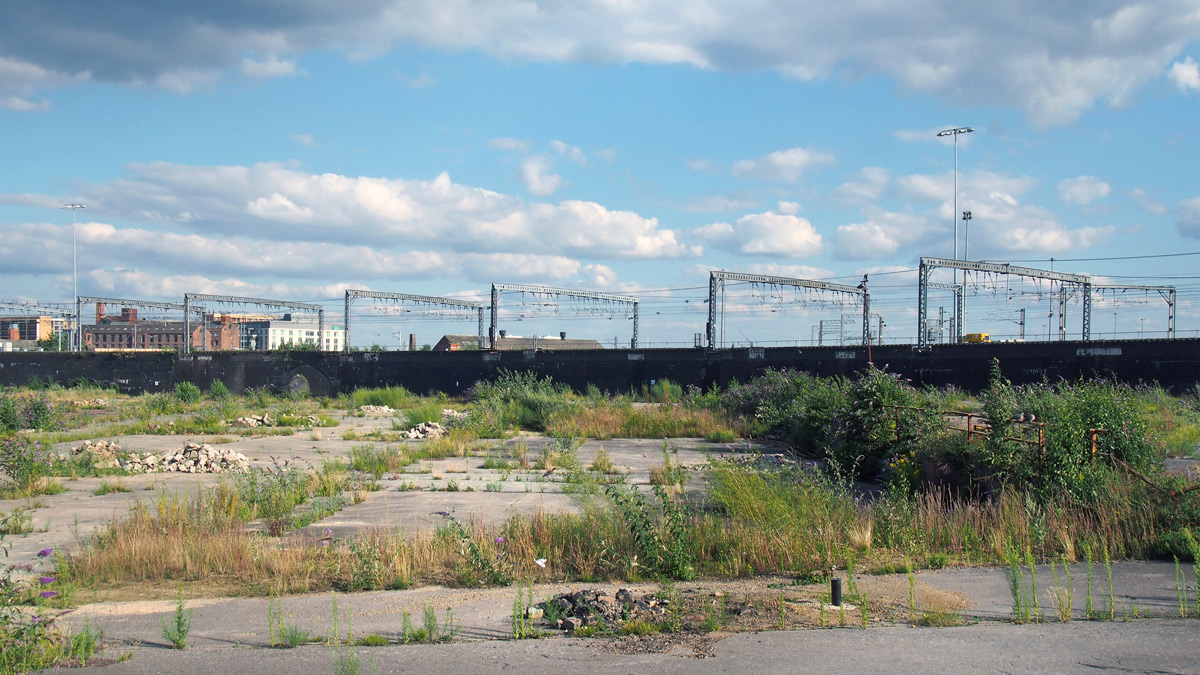Advancing Complex Brownfields Redevelopment, Made Simple

Decades of unregulated, uncontrolled and poor environmental practices have led to millions of acres of “brownfields” in the U.S., properties which must be properly remediated before they are repurposed or redeveloped. These properties come in all shapes and sizes, affected by a vast array of contaminants associated with industrial operations. What is a brownfield, and what makes it different from other types of contaminated sites?
What is a brownfield?
A brownfield is “a property, the expansion, redevelopment, or reuse of which may be complicated by the presence or potential presence of a hazardous substance, pollutant, or contaminant”, as defined by the United States Environmental Protection Agency (EPA). In New Jersey, a brownfield constitutes “any former or current commercial or industrial site that is currently vacant or underutilized and on which there has been, or there is suspected to have been, a discharge of a contaminant” as defined by state law (N.J.S.A. 58:10B-23.d). Other states have expanded definitions and programs to support their economic development and environmental programs.
Manufacturing, metalwork such as steel factories, textile mills, dry cleaning facilities, and energy exploration are just some of the prior uses which may have left contaminates behind on these now-defunct properties. In fact, there are an estimated 450,000 brownfield sites in the U.S.
A brief history of brownfields
Brownfield designation is assessed and assigned on the federal level and has been for nearly three decades. The term “brownfield” was first used in 1992 to describe properties that were ripe for repurposing but had a possible history of improperly-disposed waste and chemicals.
In the 1990s, the EPA began providing local governments with funding for two-year brownfield remediation pilot projects. In 2002, President George W. Bush (R) codified these pilot projects’ cleanup methods with the Small Business Liability Relief and Brownfields Revitalization Act. Additionally, a tax incentive in place from 1997 until 2011 allowed developers to write off the costs incurred during a cleanup, expanding the program in 2006 to include petroleum cleanup.
Funding a brownfield cleanup
Brownfield initiatives are intended to incentivize developers to “reuse” properties which once generated value for the community but cannot be used again because of historical environmentally impaired conditions. The program also intends to preserve “greenfields,” which are open properties that have never been developed, by repurposing properties that have already been developed.
The EPA provides funding to landowners for brownfield cleanups. Eligible landowners can apply for cleanup grants, through which they can obtain as much as $500,000 toward brownfield remediation efforts. Oftentimes, these grants require applicants to match 20 percent of the costs that the EPA provides, a requirement that can be satisfied via labor, money, services, or materials. Brownfield cleanup grants have a three year performance period, and landowners can apply for one grant per competition cycle.
Private development and state and federal incentive programs have been the key funding sources to remediate and redevelop brownfield sites. Of course, this is also driven by re-market conditions.
How brownfields differ from other contaminated sites
Brownfields are one of 10 contaminated site categories established and maintained by the EPA, and many of those categories are set aside for much more severe contaminations. Many of the sites in these other categories have one of these attributes missing from a brownfield, but other outstanding issues separate these sites from a lower-risk brownfield.
For example, a Superfund site, arguably the most widely-known category, is often heavily contaminated with nuclear, biological, or chemical agents; these sites can also be federally-owned to qualify. A site designated as a Resource Conservation and Recovery Act (RCRA) property likely has a history of hazardous material issues. Accidental oil spills — whether those caused by oceanic oil rigs or railroad and highway incidents — are classified as their own category as well.
What’s Next
EWMA has simplified the brownfields process, understanding that remediation is only one of the many factors that can make or break a brownfield project. Our approach reverse engineers the process and supports public and/or private redevelopment, planning and future redevelopment values to better predict the probability, profitability and actual costs in ensuring the ultimate success of a project.
Our staff, understanding the needs of our clients and projects, will tailor our contracts and structure our approach to meet our clients’ contractual obligations and redevelopment goals. Depending upon the market conditions, public/private support, best-use evaluation and an understanding of the remedial process and approach all combine to create an integrated strategy to the development of a site. If the project makes sense and is sustainable with an effective remedial approach in place, the money usually follows.
How fixed-rate cleanups can help remediate a brownfield
Brownfield cleanup can consume immense amounts of time and money. The process can be compared to repairing a car – it can be tough to understand the full extent of the damage and the repairs needed without lifting open the hood and troubleshooting what’s underneath. Similarly, with environmental remediation projects, a closer inspection can reveal the need for additional procedures and treatments to those originally planned. That’s why EWMA has developed the SECUR-IT® guaranteed fixed-price remediation program.
Through the SECUR-IT program, we guarantee the price and timeline of brownfield cleanup and maintenance. SECUR-IT prevents all parties involved from legal culpability in the case of cost escalation and compliance risk. The fixed costs and legal ease allow for stronger estimates of a project’s ROI, and allows for developers, brokers, insurance agents, and attorneys to properly plan for the tasks — and costs — at hand. Once a remediation project is complete, we continue to manage re-certifications, inspections and repairs for years to come.
With a long-term environmental remediation partner like EWMA, and with costs carefully managed through SECUR-IT, property owners and developers can breathe new life into brownfields without worry of overrunning costs or who will be responsible for long-term maintenance. Contact EWMA to schedule a consultation with one of our remediation experts.
